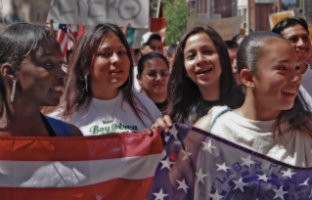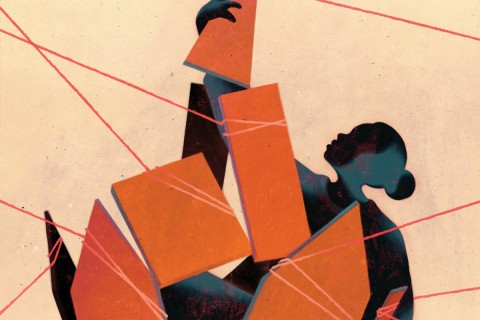Demographic turmoil
Ironically, racist attitudes may have increased during President Obama’s first term. A survey conducted by researchers at Stanford found that 51 percent of Americans now associate blacks with words such as lazy and violent, compared to 48 percent who did so before the nation elected its first black president. The Southern Poverty Law Center, which monitors racist and far-right groups, says that antigovernment “patriot” movements exploded during President Obama’s first term, and it worries that they will grow even more rapidly after his reelection.
Resistance to black leadership is deeply ingrained in American history. Historian Steven Hahn, writing in the New York Times (Nov. 10), points out that ever since the slaves were emancipated in the 1860s, white Americans have resisted the idea of blacks wielding political power over whites. Hahn notes that only three African Americans have been elected to the U.S. Senate since Reconstruction (Obama is one of them), and that this has happened in only two states, Illinois and Massachusetts. It is rare that an African American is elected to any office in a white majority district.
The so-called birther movement, which questions Obama’s citizenship, and the widespread insistence that Obama is a Muslim indicate that many whites have trouble accepting Obama as a legitimate president. These movements fit what historian Richard Hofstadter nearly 50 years ago called the paranoid style in American politics. The paranoid style flourishes amid heated exaggerations of the facts and fabricated conspiracy theories—like the ones circulating now about how Obama will take away everyone’s guns, how he will turn the nation into a socialist country, and how he is looking for a way to get around the two-term limit.
Yet, as the November election made clear, the racial and ethnic demographics of the country are undergoing a decisive shift. Obama was able to win reelection while winning just 40 percent of the white vote, because nonwhites made up 28 percent of the electorate—up from 20 percent in 2000. According to the Pew Hispanic Center, the Hispanic share of the electorate is likely to double by 2030. Already, whites constitute a minority in four states and the District of Columbia and in many metropolitan areas, including New York, Las Vegas and Memphis.
The nation’s changing racial and ethnic profile will clearly bring political change. But we can also expect it to elicit fear and resistance. On election night, when it became clear that Obama would be reelected, a group of white students at the University of Mississippi gathered to yell antiblack slurs and throw rocks at passing cars. The good news is that on the next night, about 700 people staged a counterdemonstration, holding up candles and calling for racial harmony.
The coming years will give all of us occasion for self-examination. Where do our prejudices lie? We will need each other’s help to overcome the prejudices we hold—especially the ones we are not even aware of.





